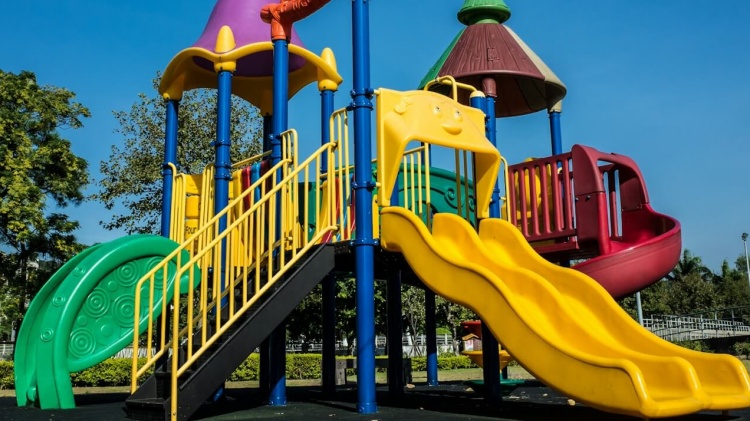10 Innovative Indoor Slide Designs for Your Home or Office
Adding a slide to your home or office is a fun and unique way to spice up your interior design. Indoor slides are great for
Installing your own indoor slide at home is an exciting DIY project that can add a unique touch of fun to your living space. With the right preparation and techniques, you can safely set up an indoor slide without construction experience.
This article will provide tips to guide you through the process of DIY indoor slide installation. We’ll cover planning considerations, slide layout, essential tools, slide assembly, finishing, and more. With these tricks and tips, you’ll be whizzing down your new custom slide in no time!
The key to any construction project is proper planning and preparation. Here are important factors to consider before installing your indoor slide:
Determine the ideal location for your slide, accounting for space limitations. Measure area dimensions carefully. Include an accessible staircase or ladder for going up the slide.
Consider how the slide will be accessed and used. A straight slide works for quickly connecting floors. A winding slide is more playful. Make sure the landing area is open and safe.
Purchase a slide length and width that fits your space. Overly long slides may not fit unless installed diagonally. Avoid tight slides that increase the chances of bumping arms or legs.
Account for needing more clearance around spiral or curved slides. Check minimum ceiling height requirements so the slide fits vertically once installed.
Building permits or architectural plans may be required for major slide installations. Research local building codes thoroughly and comply with all requirements.
Verify you have all the tools, hardware and materials required for proper installation. This includes lumber, fasteners, saws, drills, levels, and any slide components.
Once you’ve selected the perfect spot and slide size, it’s time to map out the exact slide layout. Here are key steps:
Draw a rough sketch of the slide layout in the space. Note overall length, height, entrance and exit points. Indicate any curves or spiral sections. Having the visual helps plan the specifics.
Flesh out the dimensions on your sketch. Mark the lengths and angles of each slide section. Indicate staircase width and riser height if needed. These precise measurements are essential during construction.
Consider where guardrails may be needed for safety. Account for side rails in your measurements. Plan elbow rests near the slide entrance for easy access. Maps things out fully before building.
Don’t forget to account for needed clearances around the slide during mapping. Leave ample space all around for efficient access and safe use. Tight fits will complicate installation.
You’ll need a variety of supplies to safely install your DIY indoor slide. Be sure to have these essential items handy:
Purchase quality lumber and hardware for constructing the slide framework and stairs. Softwoods like pine work well. Choose galvanized fasteners that won’t corrode.
Have power tools like a circular saw, power drill, sander and level ready. Hand tools like hammers and wrenches are also essential. Gather measuring tapes, squares, levels and clamps too.
Safety first! Be sure to have sturdy work gloves, eye protection, ear protection, dust masks and hard hats to reduce construction risks.
Acquire polished plastic, fiberglass, wood or other slide materials for installation once the underlying framing is complete. Custom slides may take weeks to deliver.
For safety, use solid wood blocks, metal plates and brackets to anchor slide joints and staircase connections.
Once planning and preparation are complete, it’s time for the fun part – constructing your DIY indoor slide! Follow these steps:
Secure 2×4 or 2×6 lumber to the floor and walls to frame out the basic slide outline as mapped out. Check angles and measurements match your plan.
Add vertical and horizontal supports to form the inclined sliding platform. Lag bolts into the wall studs for strength. Use metal brackets to connect joints.
Construct staircase frames or a simple ladder design leading up to the slide entrance. Ensure stairs meet local code requirements.
Attach guardrails made from 2×4 lumber along the slide sides and entrance area. Smooth any rough edges. This prevents accidental falls when in use.
Use angled braces and reinforcement blocks at joints to anchor the slide structure solidly to the walls and flooring. This prevents any shifting or detachment.
With framing complete, attach the plastic, wood or other slide bed material using screws and construction adhesive. Keep the slide surface smooth.
Attach any entrance side panels or trim features. Use silicone caulk to seal edges and joints neatly. Sand smooth any rough spots.
Carefully inspect the completed slide using the safety checklist. Check for proper railings, smoothness, and stability. Test the slide with soft weights before allowing use.
Personalize your indoor slide using these fun accessorizing ideas:
For wooden slides, use bright, bold paint colors like red, yellow or green. Paint a zigzag stripe pattern down the center for visual flair.
Purchase custom decals with shapes, logos or special messages. Your kids will love slides decorated with their names or favorite characters.
Install LED strip lighting along the railing edges or illuminating the interior. This creates a thrilling, futuristic ride.
Add a ball pit or foam cube pit at the slide exit for safe, soft landings into the pool of shapes.
Enclose an open slide with a colorful tube for a fully immersive sensory sliding experience.
Mount an electronic timer display that clocks riders’ slide speeds for fun competitions.
During test runs, you may discover minor issues needing tweaks:
If the slide produces unsafe speeds, install ribbed rubber matting along the slide bed. This adds friction to control velocity.
Cushion a noisy metal or plastic slide using soft foam covers or rubber pads. Felt furniture pads also reduce reverberating noise.
For smaller kids, a steep slide may be too scary. Adjust the incline by lowering the exit height or propping up the entrance.
Seal any gaps along the slide edges using plexiglass inserts. This prevents clothing from catching during use.
Smooth out rough spots at slide entrance, exit or turns using foam cushioning. Round off corners or pad protruding joints.
Regular maintenance keeps your indoor slide performing safely for years of fun. Follow these upkeep tips:
Check monthly for any loose fasteners, damage, or wear needing repair. Tighten hardware and sand rough spots as needed.
Apply a thin layer of liquid wax to plastic and metal slides annually. This maintains an ultra-smooth glide surface.
Use a soft brush to regularly clear the slide off any dirt, debris, or leaves that may accumulate from clothing fibers or nearby plants.
Ensure the maximum rider weight isn’t exceeded. Post a visible weight limit sign near the slide entrance.
Repaint any painted slide sections as needed when the color fades or paint chips start appearing.
After following these indoor slide installation tips, you’ll be ready to enjoy quick rides between floors in your home anytime! Use it safely, and maintain it regularly, and your DIY slide will provide years of thrilling amusement.
Now that you know how to install a slide indoors, will you be adding one to your own home? Let your imagination go wild, dreaming up the perfect custom slide design to bring some extra fun to your living space!

Adding a slide to your home or office is a fun and unique way to spice up your interior design. Indoor slides are great for

Installing an indoor slide is a fun way to add excitement to any home or office space. However, like any fixture, slides require proper care

Having your own indoor slide is an exciting way to add some fun and convenience to your home. Slides allow for quick transportation between floors,

For many adults, the memory of joyfully sliding down playground slides as children evokes happy nostalgia. The thrill of finally reaching the top, followed by
Adding a slide to your home or office is a fun and unique way to spice up your interior design. Indoor slides are great for
Installing your own indoor slide at home is an exciting DIY project that can add a unique touch of fun to your living space. With

Installing an indoor slide is a fun way to add excitement to any home or office space. However, like any fixture, slides require proper care

Having your own indoor slide is an exciting way to add some fun and convenience to your home. Slides allow for quick transportation between floors,
Copyright © 2024 babyindoorslide. All Rights Reserved.